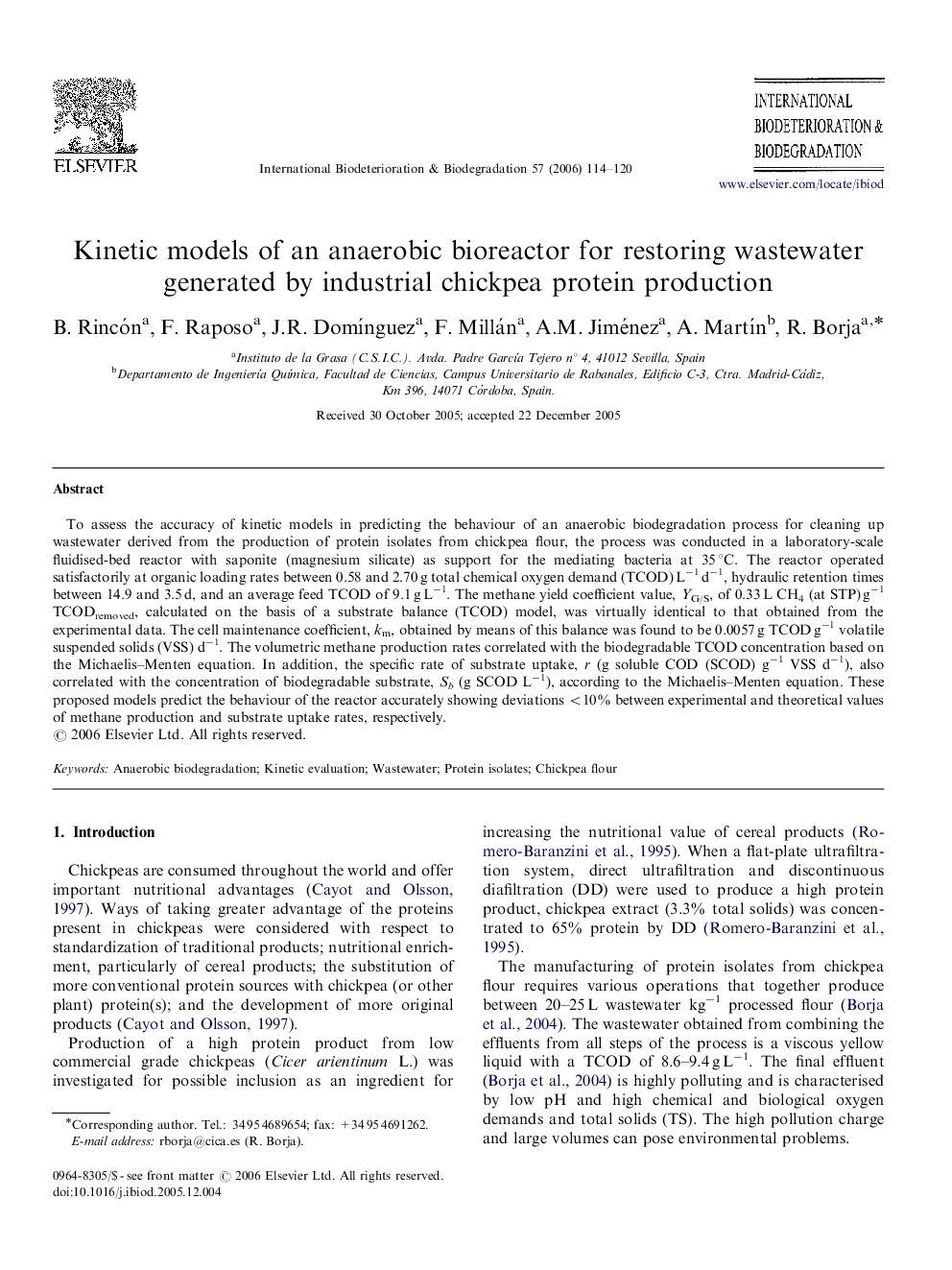| Article ID | Journal | Published Year | Pages | File Type |
|---|---|---|---|---|
| 4365899 | International Biodeterioration & Biodegradation | 2006 | 7 Pages |
To assess the accuracy of kinetic models in predicting the behaviour of an anaerobic biodegradation process for cleaning up wastewater derived from the production of protein isolates from chickpea flour, the process was conducted in a laboratory-scale fluidised-bed reactor with saponite (magnesium silicate) as support for the mediating bacteria at 35 °C. The reactor operated satisfactorily at organic loading rates between 0.58 and 2.70 g total chemical oxygen demand (TCOD) L−1 d−1, hydraulic retention times between 14.9 and 3.5 d, and an average feed TCOD of 9.1 g L−1. The methane yield coefficient value, YG/S, of 0.33 L CH4 (at STP) g−1 TCODremoved, calculated on the basis of a substrate balance (TCOD) model, was virtually identical to that obtained from the experimental data. The cell maintenance coefficient, km, obtained by means of this balance was found to be 0.0057 g TCOD g−1 volatile suspended solids (VSS) d−1. The volumetric methane production rates correlated with the biodegradable TCOD concentration based on the Michaelis–Menten equation. In addition, the specific rate of substrate uptake, r (g soluble COD (SCOD) g−1 VSS d−1), also correlated with the concentration of biodegradable substrate, Sb (g SCOD L−1), according to the Michaelis–Menten equation. These proposed models predict the behaviour of the reactor accurately showing deviations <10% between experimental and theoretical values of methane production and substrate uptake rates, respectively.
